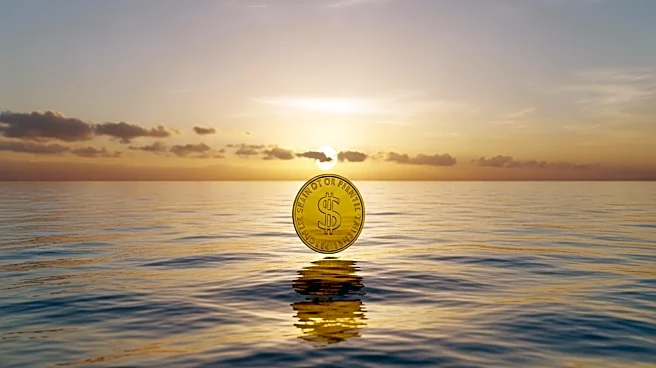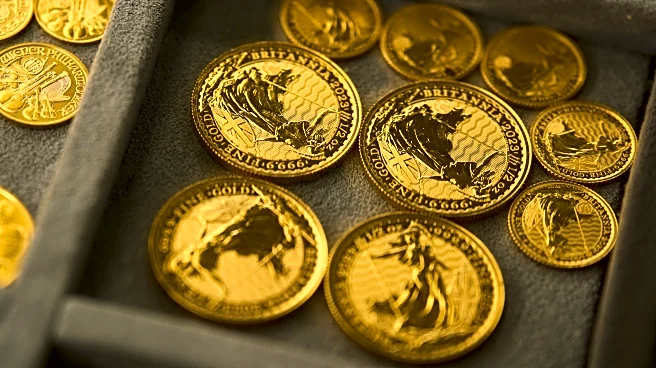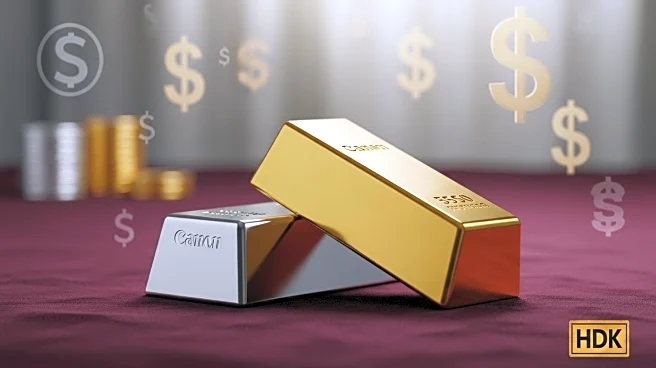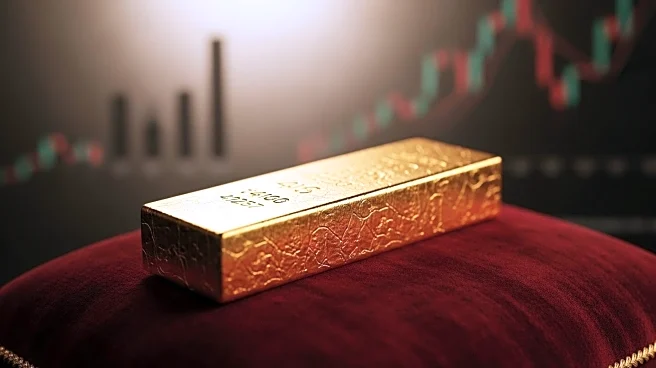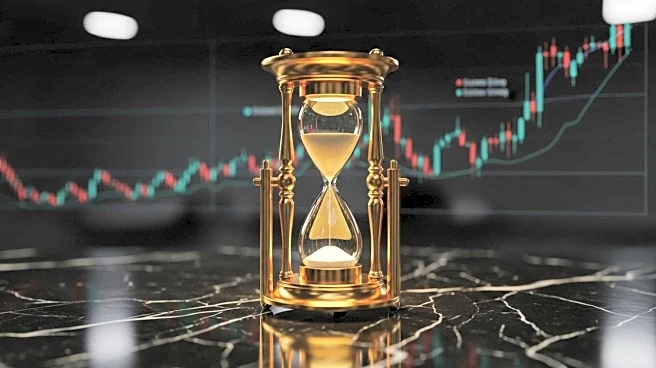What's Happening?
Gold prices have reached a record high of $4,000 per ounce, driven by economic uncertainty linked to President Trump's tariffs. These tariffs have strained businesses and consumers, leading to increased inflation and a weakened job market. As a result, investors are turning to gold as a safe haven, contributing to its surge. Analysts suggest that the Federal Reserve's potential interest rate cuts and ongoing trade tensions have further bolstered gold's appeal as a hedge against economic instability. Goldman Sachs has raised its December 2026 price forecast for gold to $4,900 per ounce, reflecting expectations of continued demand. Additionally, China's central bank has added gold to its reserves for the 11th consecutive month, indicating strong global interest in the precious metal.
Why It's Important?
The surge in gold prices highlights the broader economic impact of President Trump's tariffs, which have contributed to inflation and job market challenges. As investors seek stability, gold's appeal as a hedge against economic uncertainty grows, potentially influencing investment strategies and financial markets. The Federal Reserve's anticipated interest rate cuts could further affect the economy, with implications for inflation and consumer spending. Businesses and consumers may face increased costs, while investors could benefit from gold's rising value. The situation underscores the interconnectedness of trade policies, monetary decisions, and global economic trends.
What's Next?
Investors and policymakers will closely monitor the Federal Reserve's upcoming meetings, where interest rate decisions could further impact gold prices and economic conditions. The potential for additional rate cuts may influence market dynamics and investor behavior. Businesses may need to adapt to changing economic conditions, while consumers could experience shifts in purchasing power. The ongoing trade tensions and geopolitical uncertainties will likely continue to drive demand for gold as a safe haven, affecting global financial markets and investment strategies.
Beyond the Headlines
The rise in gold prices may have deeper implications for global economic stability and trade relations. As countries like China increase their gold reserves, there could be shifts in international financial strategies and currency valuations. The trend towards de-dollarization, as investors seek alternatives to the US dollar, may impact global trade and economic policies. Additionally, the focus on gold as a hedge against inflation and economic instability highlights the challenges faced by policymakers in managing economic growth and stability.




